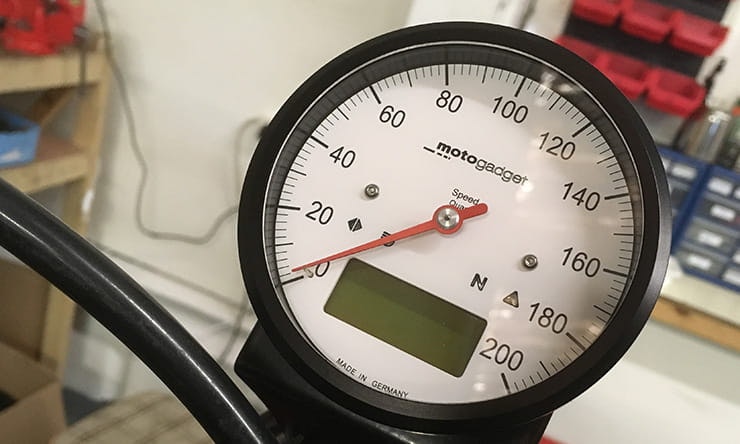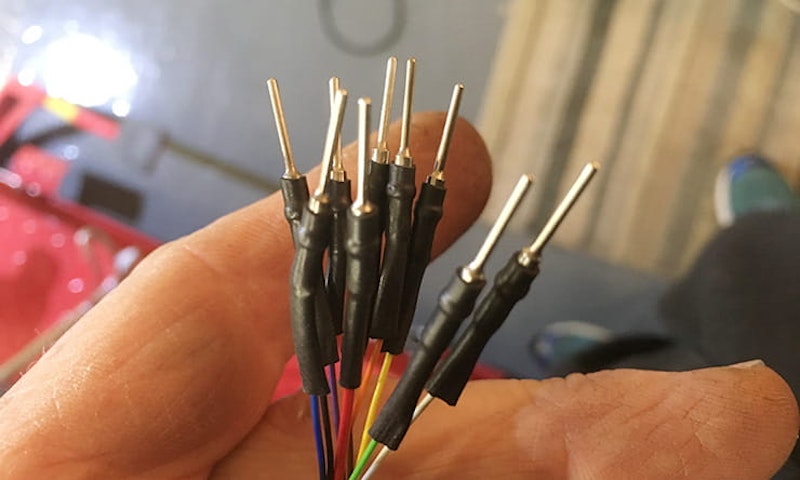Motorcycle electrics explained: Speedos
By Rupert Paul
Motorcycle Journalist
03.10.2017
Rupert Paul of Rupe’s Rewires has been designing and building custom wiring looms for six years. Here’s his take on what to look for when you buy aftermarket electrics…
The choice is mind boggling. I’ve fitted aftermarket speedos and dashes made by Acewell, Translogic, Motogadget, Koso, Daytona and Smiths. All had good instructions and worked as advertised, though one Koso needed a simple mod to get the indicator warning light to flash (see LED indicators). Some give you the option of a rev counter or engine temp readout even if the original bike didn’t have one.
Most, however, use tiny cables, which usually need connecting to normal-sized cables, preferably via bullets or a plug. The snag is that conventionally available bullets and plugs are too big for tiny wires. You can always solder and heat shrink little and big cables together but it’s a bodge, especially if you want to unplug the speedo later on. Really, you need a robust, detachable plug.
I use Deutsch DTM pins (from Polevolt.co.uk) that fit into waterproof Deutsch connector plugs. DTM pins will accept 16 amp cable or the skinny stuff. If it’s really thin, you can pack the crimp out with spare copper strands. Genuine Deutsch crimp tools are crazy money, but pattern ones from the US (around £40) work OK. If you can’t be arsed with all that, choose a speedo that has a plug already fitted, or uses decent-sized (ideally 1square-mm copper strands) cable.
The second thing hardly anyone thinks about is mounting the speedo sensor. It’s usually a threaded tube held a couple of millimetres from a magnet or disc bolt, so that it picks up more pulses as the wheel goes faster. Some sensors come with plastic brackets, but for reliability you really need an engineer to drill a rear wheel caliper carrier, to allow exact adjustment of the gap. Or you could get a GPS speedo…
My favourite speedo is the Daytona Velona Dark, which looks like a glass orb until you turn it on, when a bluey-green display suddenly appears. Very cool. Smiths sells some lovely vintage replica dials too…
Get more advice on all forms of motorcycle electrics by clicking here
Rupe’s Rewires
Meet Rupert Paul, BikeSocial’s electrics expert…
Share on social media:

